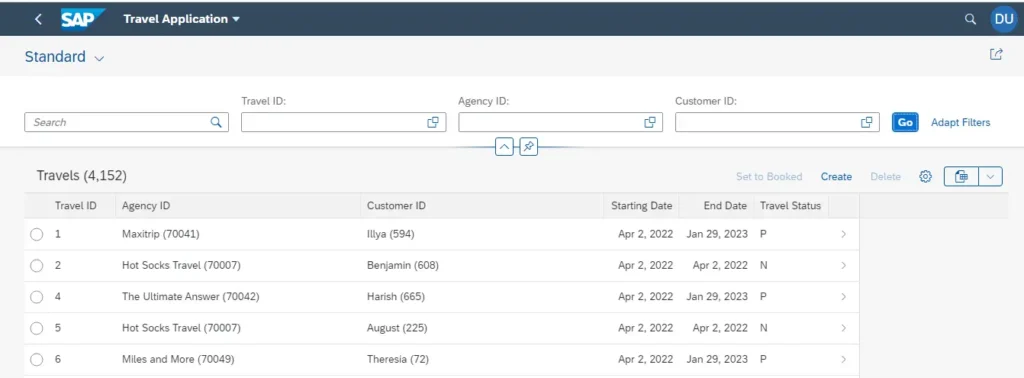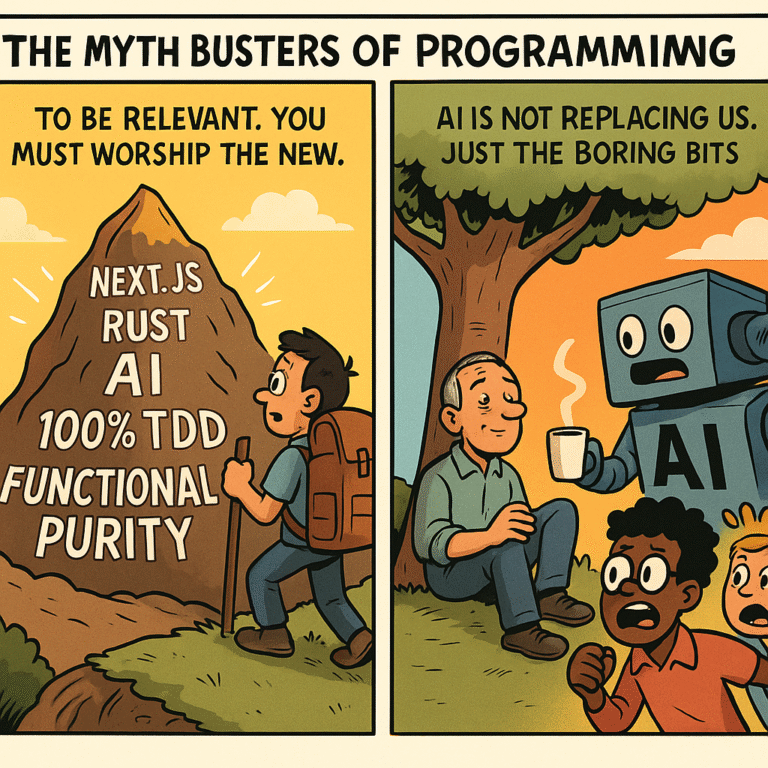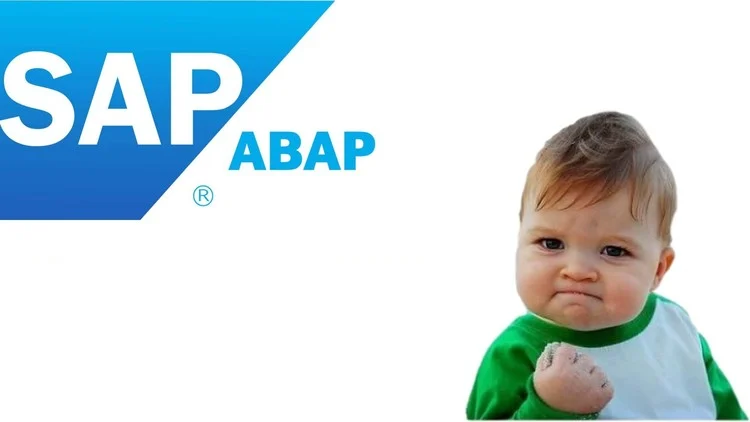Connect with me
What the heck is SAP ABAP?
ABAP has come a long way—from a reporting language in the 1980s to a modern, cloud-ready, full-fledged platform in 2025. Its ability to evolve while maintaining strong ties to enterprise data and processes is what makes it unique—and enduring.
I started my programming journey by first diving into the modern web 2 stack.
My first real programming language—beyond simple “Hello, World!” experiments—was JavaScript in 2017. My initial project was a simple calculator built using JavaScript and HTML.
Since then, I’ve explored many other programming languages and frameworks to create robust, end-to-end software for the web. The tools, frameworks, and technologies that help us build modern software have evolved rapidly and continue to do so at an unprecedented pace.
Frameworks like MERN, which were quite powerful five years ago, now seem dwarfed compared to SaaS and microservices-based architectures in 2025, in terms of efficiency and the speed at which applications can be developed and deployed.
Now, when you consider how long ABAP has survived as the top choice for companies’ ERP software needs, it’s truly mind-blowing! ABAP is over 40 years old and continues to evolve each year.
SAP claims that more than 80% of the ERP needs in the world are fulfilled by SAP products. And the main power horse of this scale has been ABAP.
When ABAP was adopted by SAP in 1983, it stood for Allgemeiner Berichts-Aufbereitungs-Prozessor (General Report Creation Processor), meaning it was primarily used to generate reports like invoices from business data.
ABAP integrated directly with SAP systems to create summaries, documents, and reports, providing users with logical and executable scripts to customise printed data. Just think about it—having such a feature integrated into a business system was no small feat in the 20th century!
Over the years, ABAP evolved from a simple scripting language for generating reports to supporting more complex business services. Today, ABAP stands for Advanced Business Application Programming. It is no longer limited to reports; you can now build entire end-to-end applications with ABAP that interact with business data, serving and collecting data as needed.
As ABAP progressed, it transformed from a simple scripting language into a product—and ultimately into a full-fledged platform.
Yes! ABAP is a platform, a product, and a programming language.
ABAP as a Programming Language
Decades have passed, yet ABAP remains. Over the years, many versions have been built and released: starting from SAP ABAP in 1983, to ABAP OO (Object-Oriented) in 2000, and most recently ABAP 7.54+ in 2025. Here, we’ll focus on ABAP’s modern form in the 21st century.
Features of ABAP as a programming language:
- Procedural and Object-Oriented: ABAP started as a purely procedural language but adopted object-oriented paradigms after Java’s rise. Today, object-oriented programming (OOP) is the recommended approach in ABAP, particularly with modern tools like CDS views and ABAP Cloud, which emphasise maintainability and scalability.
- Interpreted: ABAP is primarily an interpreted language, though some parts involve compiled elements.
- Strongly Typed: ABAP is strongly typed, ensuring:
- Type safety
- Static type checking
- Explicit declarations
DATA(), which determine types at runtime and allow flexible assignments. - Scripting Language: ABAP acts as the scripting language for the ABAP application server, similar to how JavaScript runs in browsers or Node.js.
- Database-Driven: ABAP source code is not stored in files but in database tables known as repositories. This close database integration means ABAP’s version control is managed through SAP’s Change and Transport System (CTS), rather than tools like Git.
- Source-Based and Form-Based: ABAP combines source-based (text) and form-based (configuration) components. When developing in ABAP, you also work with repository artefacts—container objects that store configurations and are edited via form-based editors.
class zcl_hello_world definition.
public section.
interfaces if_oo_adt_main.
endclass.
class zcl_hello_world implementation.
method if_oo_adt_main~run.
out->write('Hello, World!').
endmethod.
endclass.ABAP as a Product

When thinking of ABAP as a product, you might ask: “What can ABAP actually do?” For a long time, I wondered the same. When I finally understood, I found it nothing short of amazing.
ABAP enables you to create data-driven applications for collection, processing, analytics, and more—quickly and reliably.
While SAP offers many applications built in ABAP, developers can also use it to create additional applications, either as extensions or standalone solutions for specific business needs.
Consider a hypothetical scenario: your HR department needs an application to expose basic employee information as a searchable directory across the company. Normally, in a non-ABAP world, this would require separate infrastructure, UI, security, and deployment considerations. However, using ABAP’s Restful Application Programming (RAP) model, you can build this type of end-to-end application within minutes!
Now imagine the countless simple applications like this, needed worldwide, to ensure ERP systems seamlessly align with business data needs every day. That’s the power of ABAP as a product.
The most popular product model today is the ABAP Cloud Development model, which uses RAP as its programming model and works across SAP’s cloud-ready product suite.
Learn more about ABAP Cloud:
It’s worth noting that ABAP-based applications often use non-ABAP components too, such as SAPUI5 and related libraries, to serve RAP services.
ABAP as a Platform
When we discuss ABAP as a platform, we refer to the ABAP Application Server (AS) and the complete set of tools and artefacts it offers to build, test, and maintain ERP applications.
Traditionally, ABAP AS was part of SAP ERP R/3 systems, where applications were built using procedural or classic ABAP models.
Today, SAP S/4HANA (now known as SAP Business Suite) uses ABAP Cloud as the recommended programming model. ABAP can now be used across four primary platforms, all leveraging ABAP AS:
- SAP S/4HANA On-Premise
- SAP S/4HANA Cloud Private Edition
- SAP S/4HANA Cloud Public Edition
- SAP BTP ABAP Environment
Additionally, SAP offers a Docker image license for self-hosting ABAP AS.
With tools like the ABAP Development Toolkit (ADT) in Eclipse, ABAP becomes a complete platform for building, testing, and deploying business applications.
Many libraries and artefacts are pre-bundled within the platform, allowing developers to focus more on writing business logic than on configuring supporting infrastructure.
Final Thoughts
ABAP is a hidden giant in the ERP realm. However, SAP’s long-term vision on ABAP and RAP will shape the next generation of the SAP product suite.
Subscribe to my newsletter today!






Pretty! This has been a really wonderful post. Many thanks for providing these details.
Welcome 😊